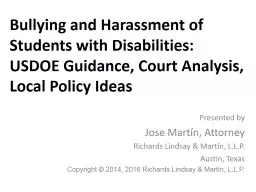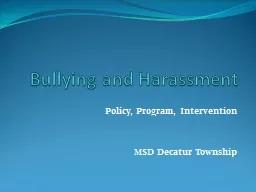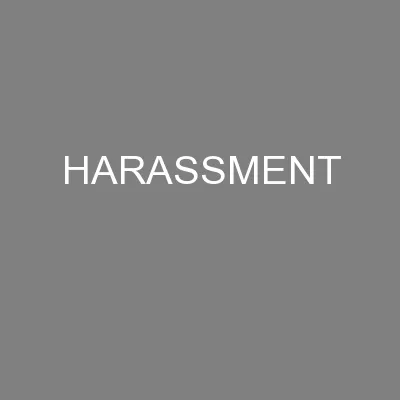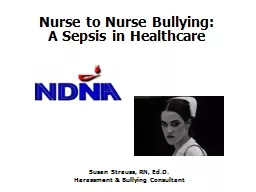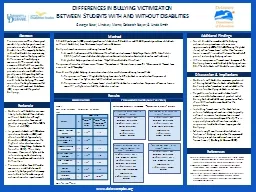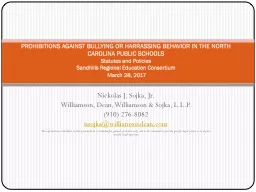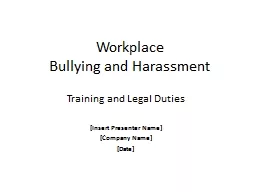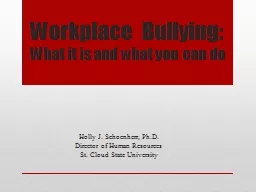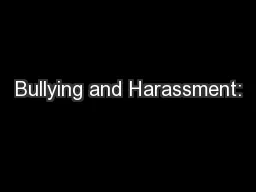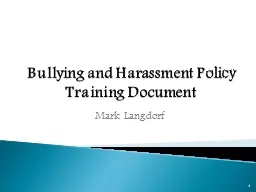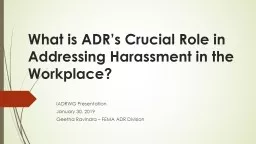PPT-Bullying and Harassment of Students with Disabilities: USDOE Guidance, Court Analysis,
Author : liane-varnes | Published Date : 2018-10-24
Presented by Jose Martín Attorney Richards Lindsay amp Martín LLP Austin Texas Copyright 2014 2016 Richards Lindsay amp Martín LLP Current circumstances Harassment
Presentation Embed Code
Download Presentation
Download Presentation The PPT/PDF document "Bullying and Harassment of Students with..." is the property of its rightful owner. Permission is granted to download and print the materials on this website for personal, non-commercial use only, and to display it on your personal computer provided you do not modify the materials and that you retain all copyright notices contained in the materials. By downloading content from our website, you accept the terms of this agreement.
Bullying and Harassment of Students with Disabilities: USDOE Guidance, Court Analysis,: Transcript
Download Rules Of Document
"Bullying and Harassment of Students with Disabilities: USDOE Guidance, Court Analysis,"The content belongs to its owner. You may download and print it for personal use, without modification, and keep all copyright notices. By downloading, you agree to these terms.
Related Documents

